Russian processor Baikal
Yesterday I happened to be the first of the representatives of the press to visit the company Baikal Electronics , which developed and produces the Baikal-T1 processor.
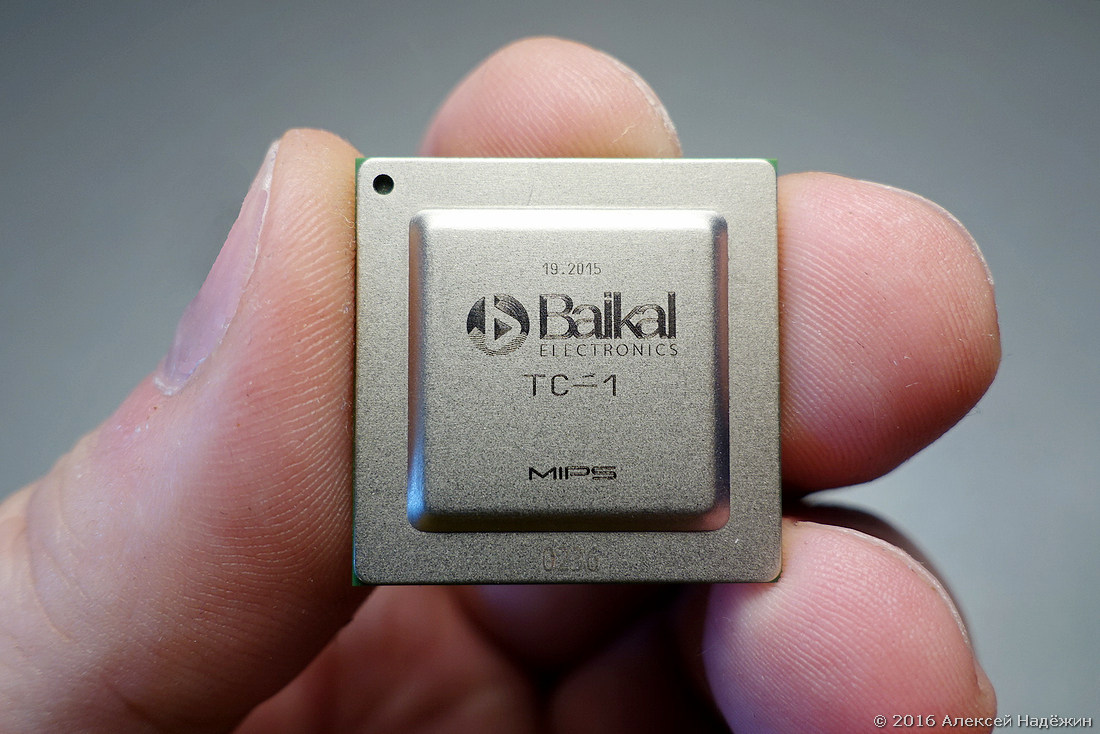
This small processor consumes only 5 watts and can work even without a radiator. The processor has three Ethernet controllers (two Gigabit and one 10 Gigabit), a DDR3-1600 memory controller supporting up to 8 GB, a PCIe Gen.3 controller, a SATA 3.0 controller (6 Gbps), and a USB 2.0 controller.
The processor is built on a 2-core MIPS 32 r5 P5600 (this is the world's first implementation of a processor on this core), operating at a frequency of up to 1.2 GHz, embedded 1 MB cache, and a 28 nm process.
')
In terms of performance, Baikal-T1 is comparable to Intel Atom processors and processors of modern smartphones. It will be used primarily in high-power telecommunications equipment (routers, managed switches), but is also suitable for thin clients.
The company "T-Platform" begins production of Tavolga monoblocks Terminal TP-T22BT on the processor Baikal T1. They will be used to create workstations where special security requirements are imposed.
Tavolga works under Linux and can be equipped with any compatible application programs with it - LibreOffice office suite, Firefox browser and many others.
Tabolga Terminal also works in terminal mode as a web client, providing remote access to any applications via a web browser or using remote desktop protocols such as RDP or VNC.
Baikal Electronics signed a memorandum on scientific and technical cooperation with Lenovo.
Lenovo has already demonstrated a working sample monoblock ThinkCentre Tiny-in-one 23, built on a Baikal-T1 processor.
Today, for the first time, I am publishing data on the speed of a Baikal-T1 processor operating at 1 GHz.

Coremark: 10342 coremarks (2 thread), Whetsnone: 1052 MWIPS (2 thread), Dhrystone: 3651 VAX MIPS (1 thread).
Coremark results for most processors can be found here .
By the time the development of the Baikal-T1 processor was completed, the company had existed for three years already, it employed 70 Russian hardware workers and programmers.
The licensed MIPS P5600 core was taken as a basis, and Ethernet, SATA and USB controllers were also licensed. Russian developers had to assemble these components together, make them work correctly with each other and make the chip layout according to the current 28 nm topology. Some processor components have been developed from scratch.
I asked to show the topology of the processor Baikal-T1.
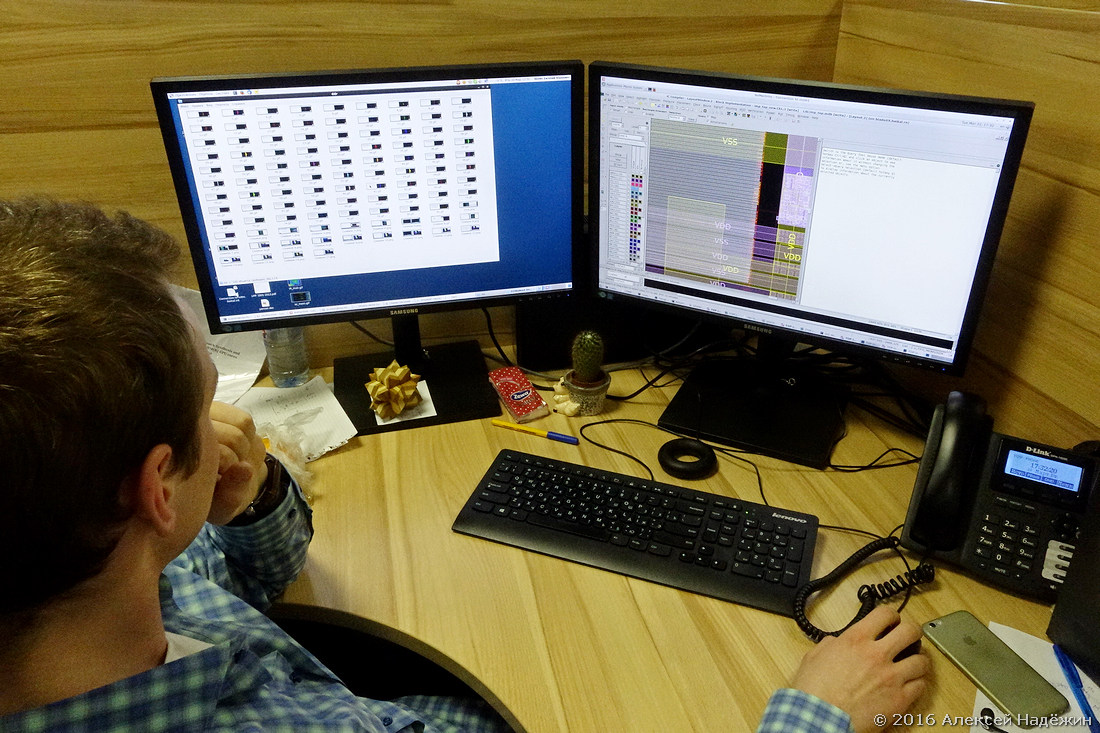
It looks like a small piece of it.
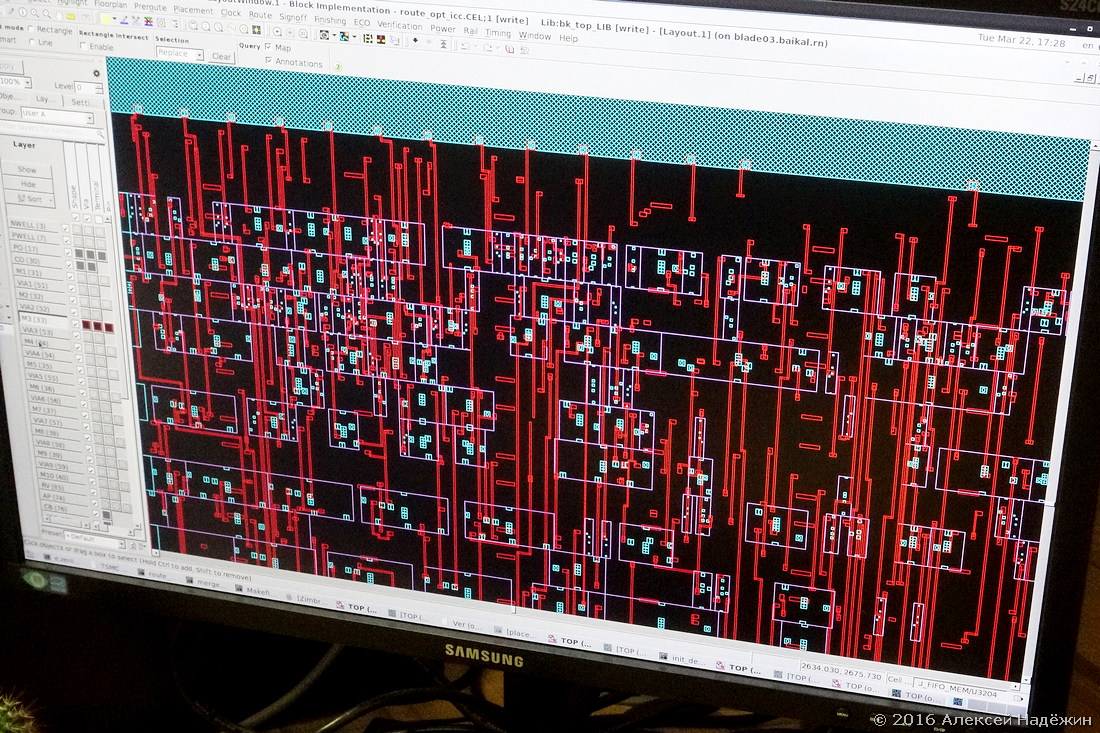
There are millions of such pieces in the processor.

Do you also see strange sad animals in the topology of Baikal compounds? ;)
This is just one layer of connections.

For the Baikal-T1 processor, a debugging board was developed in the standard MicroATX format.
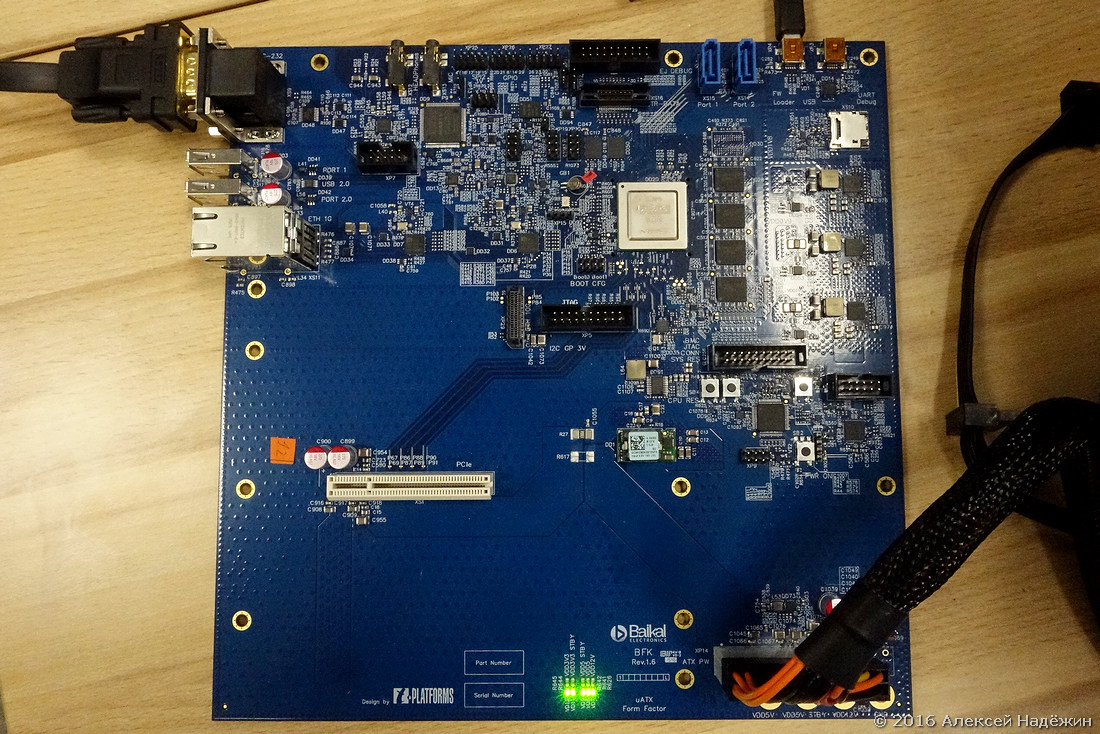
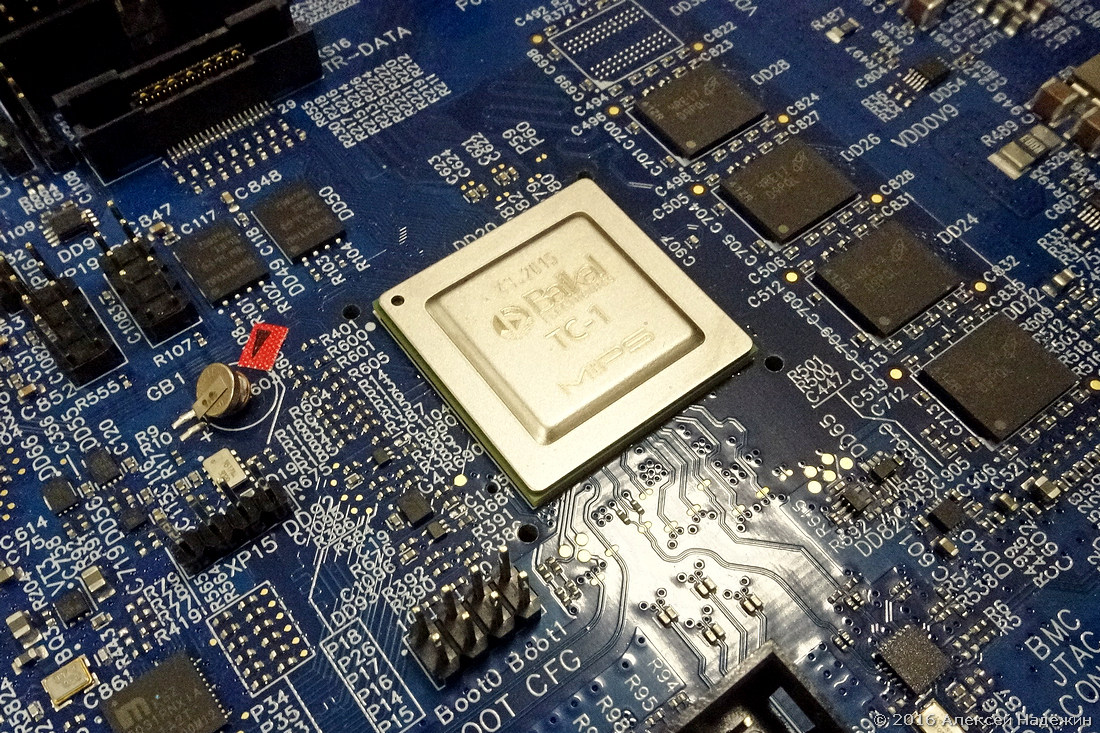
These are the two first boards.
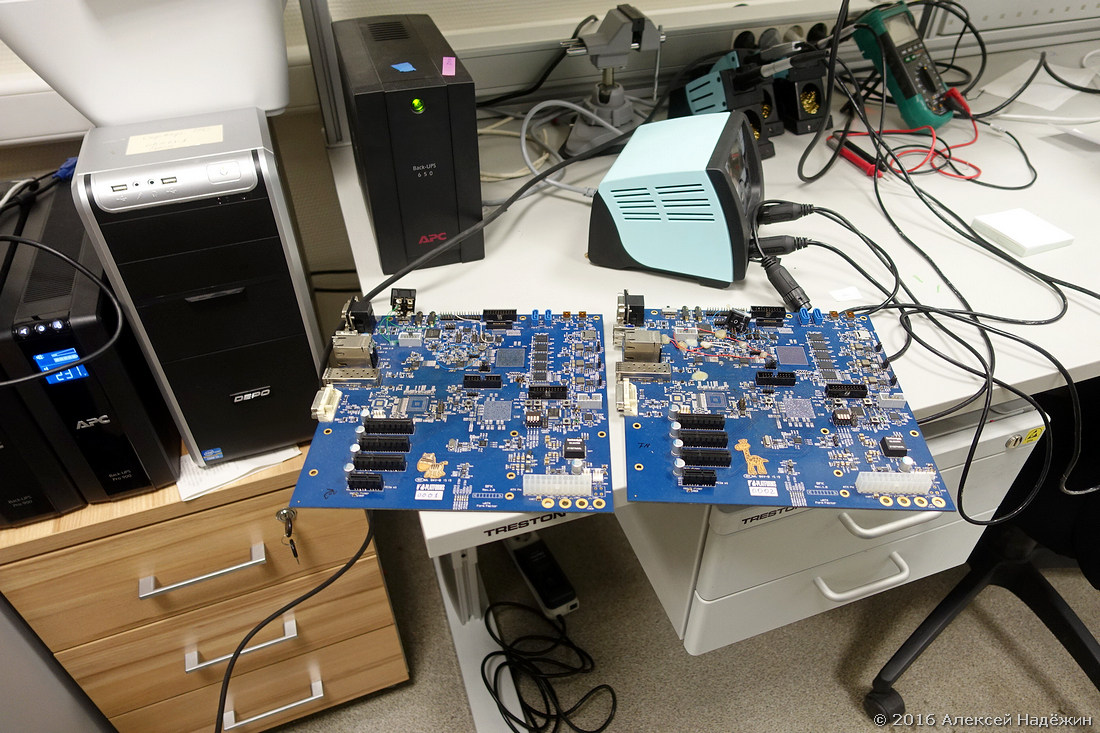
Fee number 0001. Codename "Horse". :)
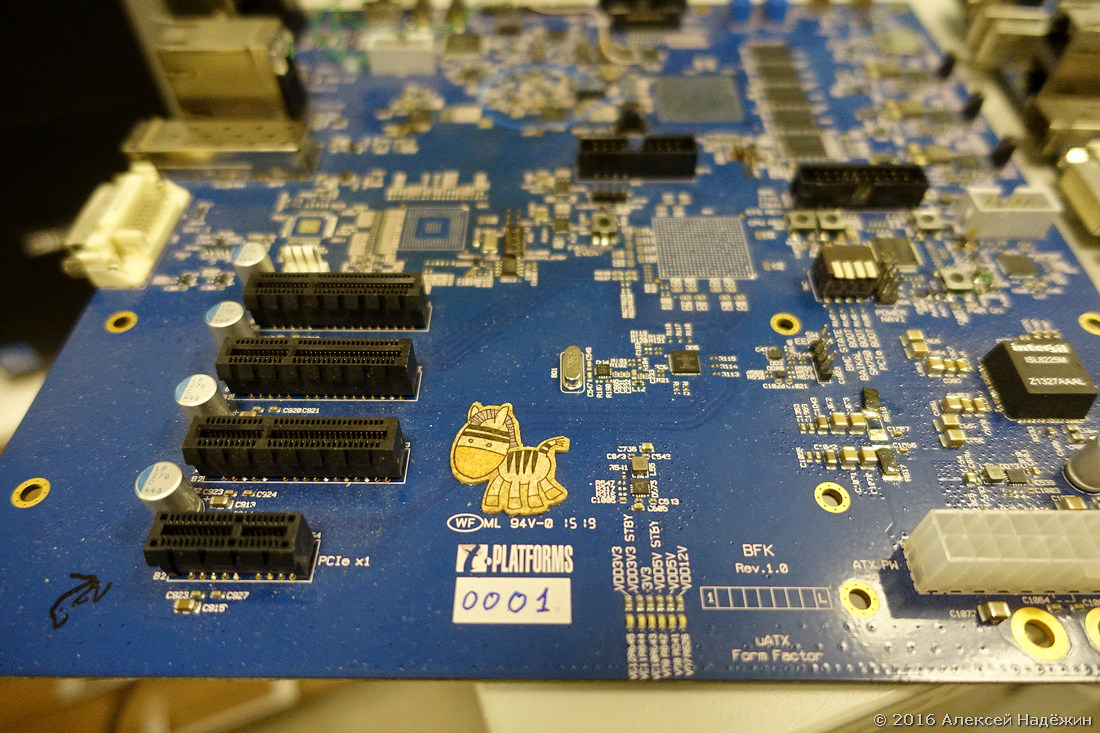
Baikal Electronics does not let anyone in the electronic laboratory, even the majority of its employees. I was let out. :)

Office of software development.
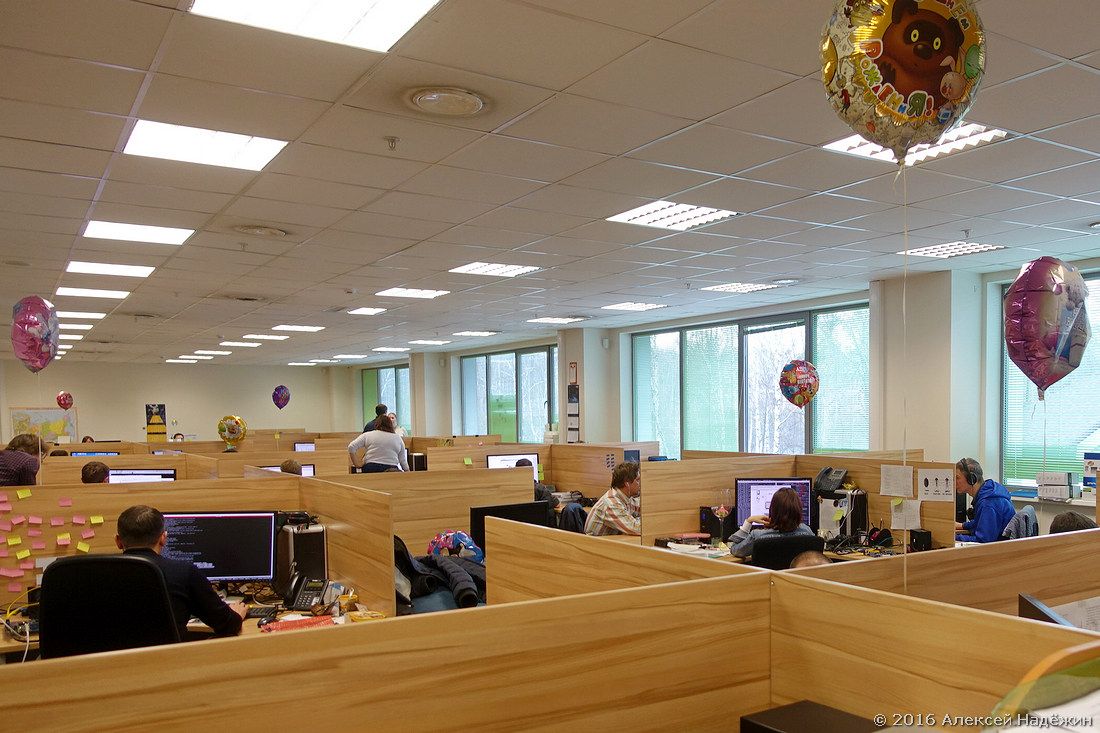
There is testing.
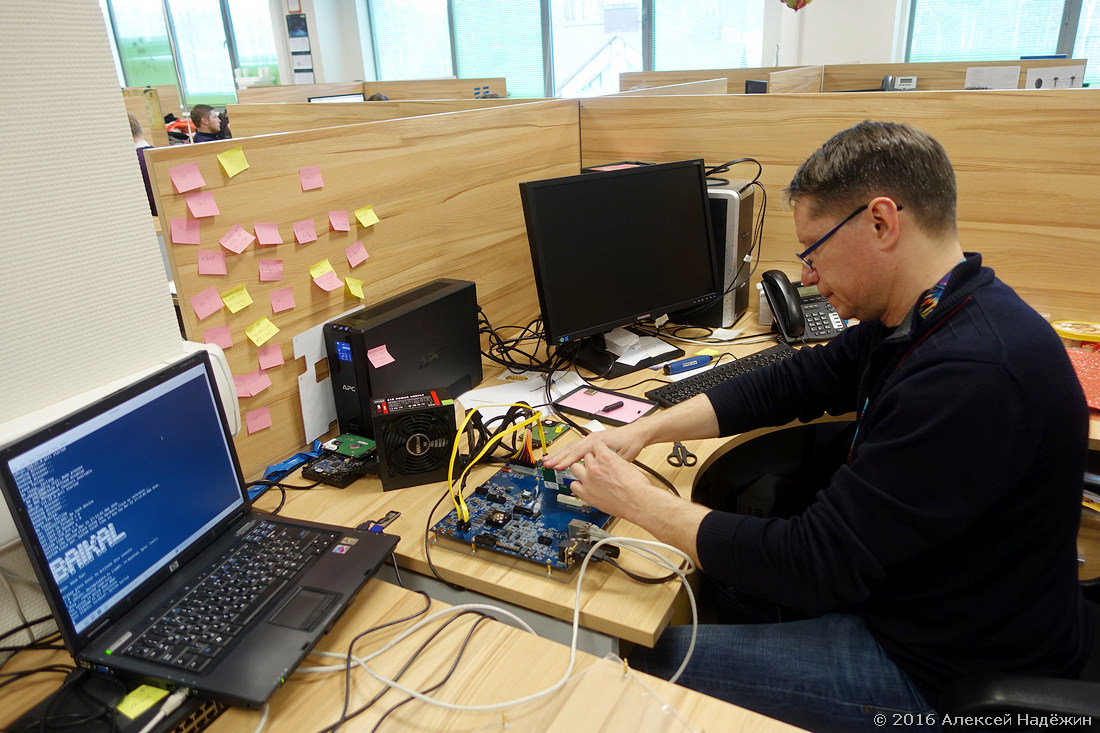
The Baikal-T1 processor turned out to be quite competitive and due to the large number of different interfaces on the chip, it has advantages over competing products of foreign developers. At a cost of about $ 60, it will allow the creation of telecommunications and industrial equipment, dispatch units and thin clients, automation and control systems. Russian origin guarantees the absence of “bookmarks” and will allow its use in structures with increased requirements for information security.
Now Baikal Electronics is working on the development of new processors based on the ARM architecture - Baikal-M for desktop PCs, embedded systems, industrial automation equipment, smart cameras and Baikal-MS for microservers and embedded systems.
2016, Alexey Nadyozhin

This small processor consumes only 5 watts and can work even without a radiator. The processor has three Ethernet controllers (two Gigabit and one 10 Gigabit), a DDR3-1600 memory controller supporting up to 8 GB, a PCIe Gen.3 controller, a SATA 3.0 controller (6 Gbps), and a USB 2.0 controller.
The processor is built on a 2-core MIPS 32 r5 P5600 (this is the world's first implementation of a processor on this core), operating at a frequency of up to 1.2 GHz, embedded 1 MB cache, and a 28 nm process.
')
In terms of performance, Baikal-T1 is comparable to Intel Atom processors and processors of modern smartphones. It will be used primarily in high-power telecommunications equipment (routers, managed switches), but is also suitable for thin clients.
The company "T-Platform" begins production of Tavolga monoblocks Terminal TP-T22BT on the processor Baikal T1. They will be used to create workstations where special security requirements are imposed.
Tavolga works under Linux and can be equipped with any compatible application programs with it - LibreOffice office suite, Firefox browser and many others.
Tabolga Terminal also works in terminal mode as a web client, providing remote access to any applications via a web browser or using remote desktop protocols such as RDP or VNC.
Baikal Electronics signed a memorandum on scientific and technical cooperation with Lenovo.
Lenovo has already demonstrated a working sample monoblock ThinkCentre Tiny-in-one 23, built on a Baikal-T1 processor.
Today, for the first time, I am publishing data on the speed of a Baikal-T1 processor operating at 1 GHz.

Coremark: 10342 coremarks (2 thread), Whetsnone: 1052 MWIPS (2 thread), Dhrystone: 3651 VAX MIPS (1 thread).
Coremark results for most processors can be found here .
By the time the development of the Baikal-T1 processor was completed, the company had existed for three years already, it employed 70 Russian hardware workers and programmers.
The licensed MIPS P5600 core was taken as a basis, and Ethernet, SATA and USB controllers were also licensed. Russian developers had to assemble these components together, make them work correctly with each other and make the chip layout according to the current 28 nm topology. Some processor components have been developed from scratch.
I asked to show the topology of the processor Baikal-T1.

It looks like a small piece of it.

There are millions of such pieces in the processor.

Do you also see strange sad animals in the topology of Baikal compounds? ;)
This is just one layer of connections.

For the Baikal-T1 processor, a debugging board was developed in the standard MicroATX format.


These are the two first boards.

Fee number 0001. Codename "Horse". :)

Baikal Electronics does not let anyone in the electronic laboratory, even the majority of its employees. I was let out. :)

Office of software development.

There is testing.

The Baikal-T1 processor turned out to be quite competitive and due to the large number of different interfaces on the chip, it has advantages over competing products of foreign developers. At a cost of about $ 60, it will allow the creation of telecommunications and industrial equipment, dispatch units and thin clients, automation and control systems. Russian origin guarantees the absence of “bookmarks” and will allow its use in structures with increased requirements for information security.
Now Baikal Electronics is working on the development of new processors based on the ARM architecture - Baikal-M for desktop PCs, embedded systems, industrial automation equipment, smart cameras and Baikal-MS for microservers and embedded systems.
2016, Alexey Nadyozhin
Source: https://habr.com/ru/post/392053/
All Articles